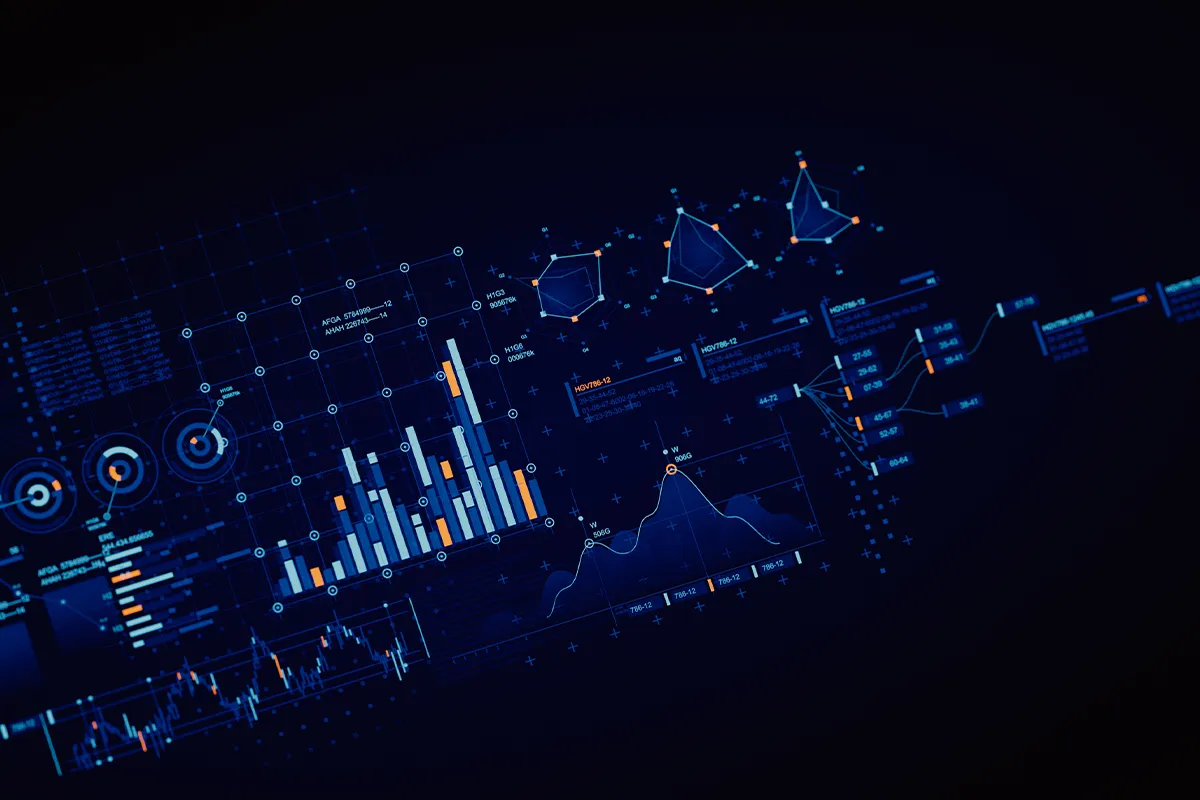Risk is an inherent element of business, but it can be mitigated or managed effectively using sophisticated tools and methodologies. Risk analytics has emerged as a crucial tool in this regard, providing decision-makers with valuable insights into potential threats and opportunities. This article defines risk analytics and explores its key components, use cases, and considerations for applying it to an organization’s operations.
Defining Risk Analytics
Risk analytics is a multidimensional discipline that combines data analysis, statistical modeling, and machine learning (ML) techniques to evaluate and manage potential risks within an organization. Crucially, risk analytics solutions provide decision-makers with a tangible grasp of the uncertainties that may impact their goals, objectives, and initiatives. Compared to traditional risk management and its retrospective analysis (i.e., reliance on historical data and intuition), risk analytics leverages advanced technologies to predict future risks and enable proactive decision-making.
Key Components of Risk Analytics
Though specific components vary depending on industry and organization, risk analytics typically consists of the following key components:
Data Collection and Integration
Collecting and integrating diverse datasets is central to risk analytics and includes both internal data (e.g., financial records, operational metrics, and customer information) as well as external data (e.g., economic indicators, market trends, geopolitical events). The integration of these datasets enables a holistic view of the organization's risk landscape.
Risk Identification, Measurement, and Quantification
Once the data is collected, risk analytics employs various methods to identify potential risks. This involves the use of statistical models, data mining techniques, and scenario analysis to detect patterns and anomalies that may indicate emerging risks. By leveraging historical data and real-time information, organizations can stay ahead of potential threats.
After identifying risks, the next step is to measure and quantify them. This involves assigning probabilities and potential impacts to each identified risk, employing advanced statistical models and simulations to assess the likelihood and severity of different scenarios. These quantification processes allow organizations to prioritize risks based on their potential impact, aiding in resource allocation and mitigation strategies. A competent risk management solution unifies these functionalities under a streamlined user interface.
Risk Monitoring and Continuous Vigilance
Risk analytics does not result in a one-time output/solution, but rather continuous data insights that require continuous interpretation, monitoring, and surveillance. Real-time data feeds and automated monitoring systems enable organizations to stay vigilant and respond promptly to changes in the risk landscape. This proactive approach is crucial for adapting to dynamic market conditions and emerging threats.
The Pivotal Role of Risk Analytics in Decision-Making
In a recent interview, V. Chandramouliswaran, Vice President of Data & Analytics at PayPal, cited data analytics as the driving force for PayPal's risk management transformation. Risk analytics empowers decision-makers with data-driven insights, enabling them to make informed and proactive decisions. By understanding potential risks and their impacts, organizations can align their strategies with risk tolerance and make decisions that optimize long-term success. Through the quantification of risks, organizations can allocate resources more effectively. This includes capital allocation, workforce planning, and investment decisions. By prioritizing risks based on their potential impact, organizations can focus their efforts on mitigating the most critical threats.
Risk analytics also plays a crucial role in strategic planning by helping organizations anticipate and prepare for future uncertainties. According to a Forbes interview with 20 leading executives, effective planning integrates data-driven input across an organization to both mitigate potential downside scenarios and take advantage of upside opportunities. Crucially, risk analytics allow for scenario analysis, helping decision-makers evaluate the potential outcomes of different strategic choices and identify the most resilient paths forward.
Risk Analytics Considerations and Challenges
Data Quality and Integration
The effectiveness of risk analytics is heavily dependent on the quality and integration of data. Inconsistent or incomplete data can lead to inaccurate risk assessments. Organizations must invest in data governance and quality assurance processes to ensure the reliability of the information used in risk analytics.
Modeling Complexity
Developing accurate risk models can be challenging due to the complexity of underlying systems and the interconnected nature of risks. Ensuring that models capture the intricacies of the organization's risk landscape requires expertise in statistical modeling, ML, and a deep understanding of the specific industry/domain. Business environments are constantly evolving, and new risks are certain to emerge unexpectedly. Organizations need to adapt their risk analytics processes to accommodate changes in the risk landscape, allowing for a flexible and responsive approach to risk management.
Considering Human Factors
While technology plays a crucial role in risk analytics, the human element is equally important in translating the analytics and translating it into actionable insights. Decision-makers must interpret the insights provided by risk analytics tools and incorporate them into their strategic decisions. Effective communication of risk information is essential to ensure that insights are understood and acted upon.
Identify, Measure, and Mitigate Potential Risks
Risk analytics solutions are a vital tool for organizations seeking to navigate the uncertainties of today's and tomorrow's business operating environments. By leveraging data analysis, statistical modeling, and advanced technologies, risk analytics provides decision-makers with the insights needed to identify, measure, and mitigate potential risks.
To learn more about how risk analytics and Ventiv’s IRM can guide and bolster your strategic initiatives, chat with an expert today.







